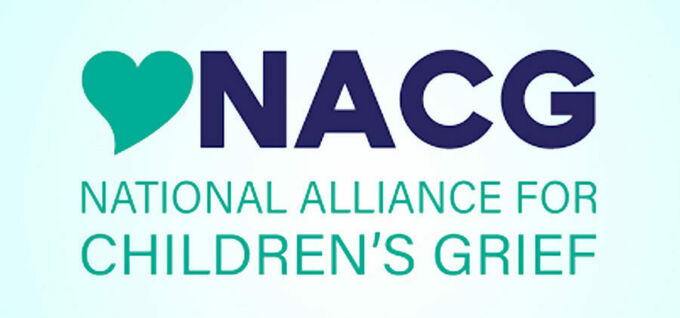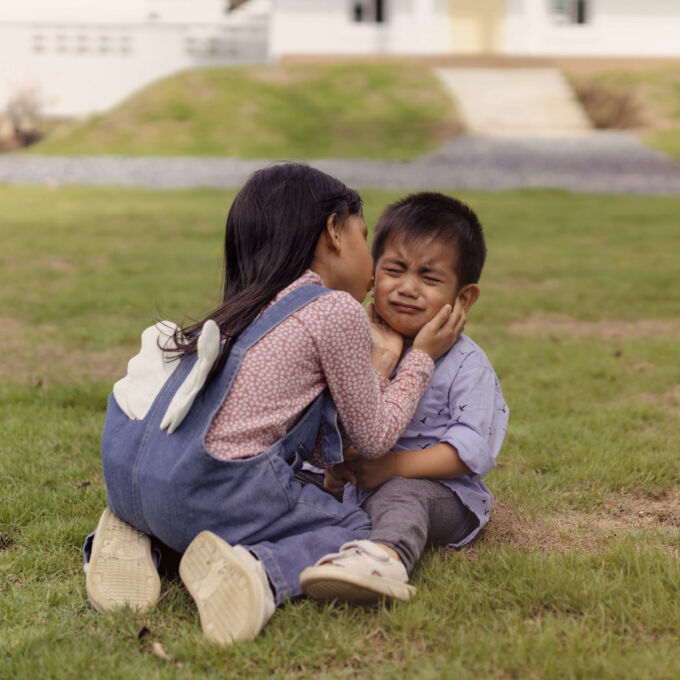
Practice Presence
Supporting Loss
Presence is more than just being in the same space as someone.
In the context of loss and grief, it means being emotionally available to them. It’s an energy you give off that communicates, “I’m here for you. I care about you. You’re safe with me.” It’s often summed up in the term, “holding space,” which means you are allowing the other person to be exactly as they are and to feel safe in that experience.
Staying on the phone in silence with someone because they don’t want to talk but don’t want to be alone.
Being in the same physical space as someone but looking at your phone when they speak to you.
Allowing someone to cry in front of you without trying to stop them; encouraging them to let their feelings out.
“Shushing” someone when they cry because it makes you feel uncomfortable.
An Essential Skill
Presence is the foundation for meaningful connection. Strengthening your ability to be present—and encouraging the children and teens in your life to do the same—is a great place to start building your ability to support someone through loss.
The Role of Listening in Grief
In this video from the National Alliance for Children's Grief, NACG CEO Vicki Jay talks with Speaking Grief Producer and Director Lindsey Whissel Fenton about the role listening plays in effective grief support.
Active listening, also known as empathetic listening, involves more presence and processing than passive listening. It is a skill that is critical for building meaningful relationships. Here are some ways to cultivate and strengthen these skills in your child or teen:
- Practice holding eye contact when you talk to them and encourage them to do the same.
- When you share something with them, ask them to reflect it back to you saying something like, “What is your understanding of what I just shared?”
- Normalize and encourage asking follow-up questions. For example, “I'd like to better understand what you're going through. Would you please tell me more about what feelings were coming up for you when your friends did that.”
Get Comfortable Being Uncomfortable
Make no mistake: being truly present with someone in pain can be uncomfortable. This is especially true if it’s a new skill for you. You may be tempted to try to soothe this discomfort by speaking to fill the silence. Before you do, W.A.I.T.
W.A.I.T - Why am I Talking?
In this video from Speaking Grief, Cristina M. Chipriano, LCSW, director of Equity and Community Outreach at Dougy Center, addresses the challenges of staying present with someone. She gently notes that our urge to fill the silence often has more to do with our own discomfort than with a genuine desire to be supportive.
The Power of Presence
The tricky thing about presence is that it feels passive. So much of what we've been taught about “support” is actually rooted in the idea that we're supposed to achieve some sort of outcome (generally, that the person feels "better.") When we've been programmed with this performance-based mindset, sitting quietly with someone when they're sad or scared can seem like the equivalent of doing nothing. But it's actually incredibly powerful.
How do you help a grieving friend?
We live in a society that loves to “fix” things. This fix-it mindset can interfere with the concept of presence. In this video created by Megan Devine and Refuge in Grief, you'll learn that the act of presence is rooted in acknowledging and accepting someone's current reality rather than trying to "fix" their pain.
“It seems counterintuitive but the way to help someone feel better is to let them be in pain.”
Megan Devine, LPC, psychotherapist, speaker and grief advocate
Quiet Companionship
A key point to keep in mind as you grow your support skills and share them with the kids and teens in your life is that meaningful support is often quiet and subtle. If you notice an urge to “perform” (i.e., say or do something that seems “supportive”), get curious about where they urge is coming from. Be patient with yourself as you learn to be present. As with any new skill, the more you practice, the easier it will become.
People Communicate in Different Ways
What presence looks like can vary person to person. If you're supporting someone who is non-verbal, you might adjust how you demonstrate your care based on their needs and abilities. For example, instead of sitting quietly while they talk, it might be holding their hands and saying something like, “When I've gone through similar situations, I felt angry. Squeeze my hand if this is true for you.”
Sharing What You Know
One of the best ways to help kids and teens develop this skill is to model it through your own behavior. When they're talking to you, be mindful of where your focus is. Let them see you put your phone away. Let them experience what it's like to have someone attuned to them. You can even say, "I'm going to put my phone on silent because what you're saying is important and I want to be present with you."
Presence Resources

Supporting a Friend Who is Grieving Poster
Description: Poster for 6th-12th grade students. Provides four ways a student could help a peer who is grieving and four things that might hurt. | Distributed by NACG.
Source: NACG

Teen Do and Don't Poster
Description: Guidance for adults working with grieving teens who might be nervous and not know what to expect or have had a bad experience with grief support.
Source: NACG




